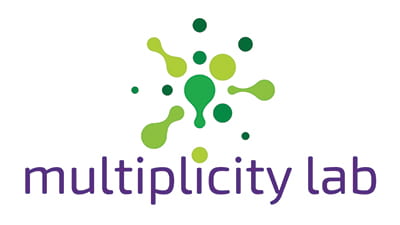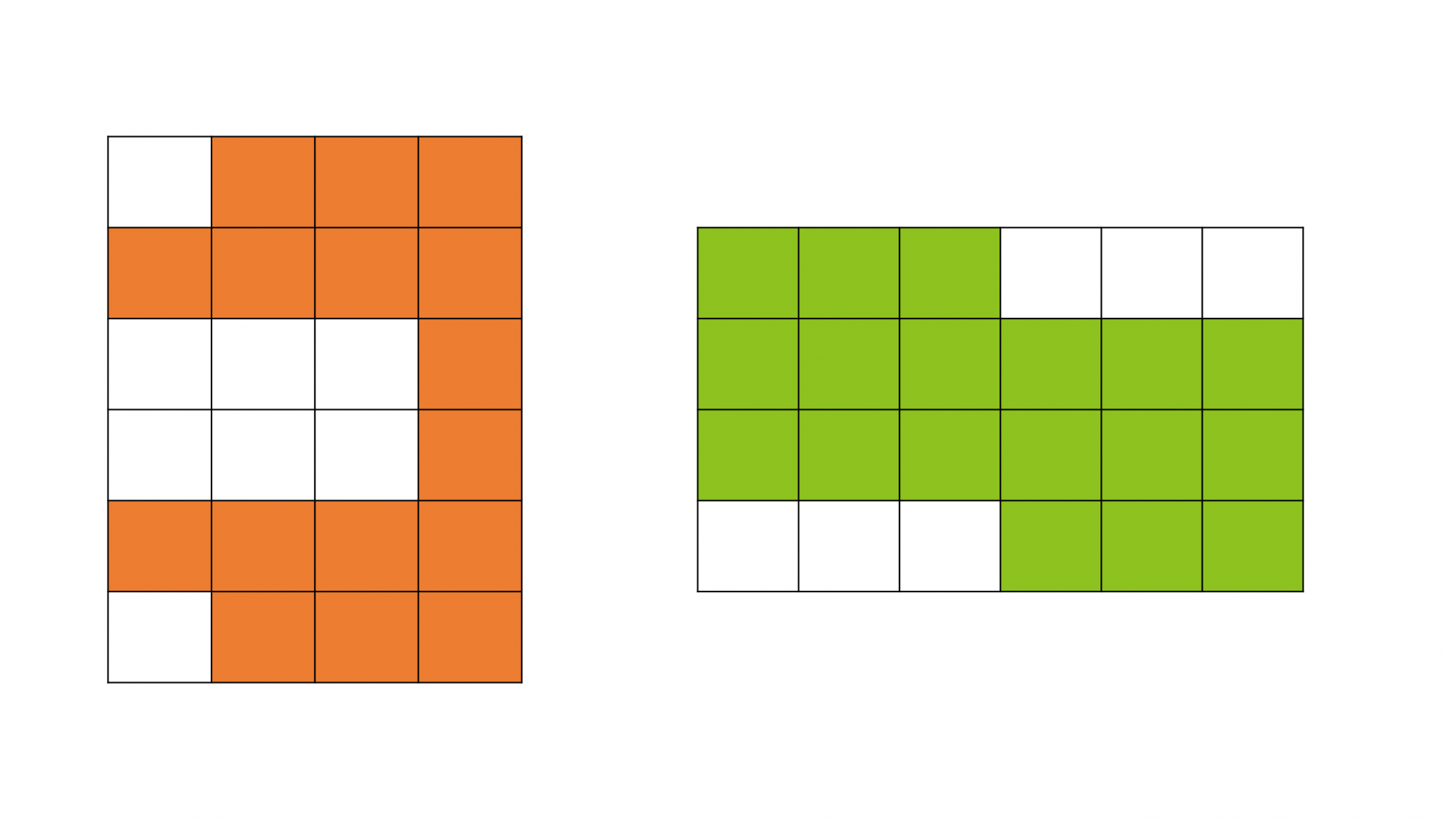Image of the Week: Which is More? Arrays
January 16, 2022Which is More? Arrays
Perhaps you’ve tried our array activities with your students before. When we’ve shared these arrays in the past, the question was, How many squared are shaded? This question generates multiple ways that students might see and count the square units inside the array. Building on the amazing ways that students think about these arrays, we’ve developed a set of new activities, like this week’s image, where students see two arrays and are asked, Which is more? Take a moment and try it yourself: Are there more orange squares or green squares? Watch what you brain does to answer this question. What did you notice about the image? What did you pay attention to? What did you choose to ignore?
Just as there are dozens of ways students might think about counting the shaded squares, there are dozens of ways students might determine which array has more shaded squares. Some students might:
- Count all the orange square, count all the green squares, and compare
- Notice that the arrays themselves are the same size: 4 x 6. This observation could be used to count the blank squares and compare those, since there are fewer. Others might use this strategy but avoid counting all by noticing that there are 6 blank squares in the green array and more than 6 blank squares in the orange array. Because we are only asking, Which is more?, a precise count isn’t needed.
- Notice that the images are symmetrical and only compare half of each, making it easier to count.
- Move the shaded squares around mentally to make solid arrays. For instance, the orange squares can be rearranged to make two 2 x 4 arrays, for a total of 16 squares. While the green squares can be shifted to make a 3 x 6 array, or 18 squares.
And of course, this is just the beginning of what your students might come up with. Indeed, we encourage you to challenge your students to find as many ways as they can to compare the shaded squares in these two images. Often, the most creative, inventive, and elegant solutions aren’t the first ones we think of. Create space for your students to develop increasingly sophisticated ways of comparing by trying this – and our other Which is more? array activities – with your students.
And we invite you to follow us on Twitter! Tweet us the fascinating ideas you students have about our activities or how you’re trying these activities in your space. We can’t wait to hear from you!
To multiplicity, cheers!
Jen Munson and the multiplicity lab group
Read the Archive
Get the Image of the Week
Each week we bring you a new image and activity you can do with your students tomorrow, and we spotlight a feature of the mathematical work that we think is important for students’ learning and your teaching.
Stay connected and see what's new.

